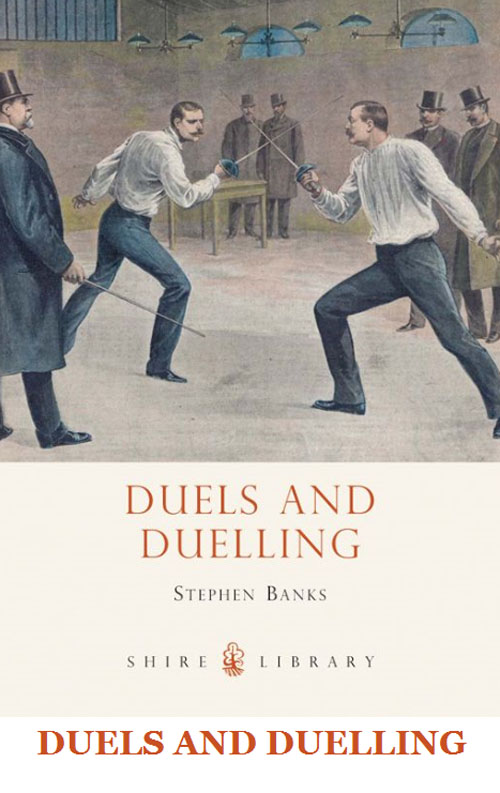Duels and Duelling
Review

Duels and Duelling, Stephen Banks, Shire, paperback, 2012, £6.99, 56 pp., ISBN 9780747811435.
Stephen Banks's compact volume on Duels and Duelling maintains the well-deserved reputation of this established series for attractively produced, well-illustrated and well-researched thematic studies accessible to the general reader. The index ranging from Achilles to Zola (Emile) provides some indication of the interest and scope of the volume encompassing also entries on Beowulf, Robert Bruce, Oliver Cromwell, Charles James Fox, Richard Brinsley Sheridan and Mark Twain. The earliest examples of ‘the spectacle of two men locked in combat' from the Trojan War are recalled from Homer's Iliad and traced through medieval trial by battle (useful for GCSE students focusing on Crime and Punishment through Time), chivalric tournaments, the emergence of duelling in the Renaissance and of the classic English duel with pistols at dawn in the eighteenth century. Long before politicians engaged in television debates they occasionally settled their differences by duelling, though curiously there is no reference to one of the most famous British duels of the regency era in the first decade of the nineteenth century between George Canning and Viscount Castlereagh on Putney Heath in 1809. However the full-colour cover image depicts a contemporary illustration by an unnamed artist in Le Petit Journal for 20 March 1898 of Colonel Henry and Monsieur Picquart duelling during the Dreyfus Affair which rocked French politics in the last decade of the nineteenth century.
During this period a German commentator described French duels as ‘a trivial game' in comparison with German duels which claimed more fatalities in the second half of the nineteenth century than the first. Duelling remained associated with Prussian military culture into the twentieth century and the historian V.G. Kiernan is invoked to confirm that such duels were tolerated ‘because of the frustrations of a highly militarised state engaged in hardly any actual military activity' since Germany had very few overseas territories and consequently from the end of the Franco-Prussian War in 1871 until 1914, few German officers saw active service and so they turned to duelling.
The book's conclusion that ‘the slaughter of the First World War ... certainly broke duelling' will be of considerable topical interest to readers reflecting on the impact of the war a century after its outbreak. Few might previously have considered that ‘gentlemanly combat drowned in the horror of the trenches, where industrial war made individual affronts seem of vanishing importance'. However, duelling was not totally eradicated by the First World War with further instances of duels occurring in Europe in the 1920s and 1930s. Banks concludes that ‘the Second World War was the final death knell, save one form of duelling that still survives today and is practised in some German and Austrian universities'. Exchange students beware and be sure to check the prospectuses of continental universities carefully since ‘today, there remain dozens of student societies located in old university towns such as Heidelberg' in which a form of student duelling is still occasionally practised!

